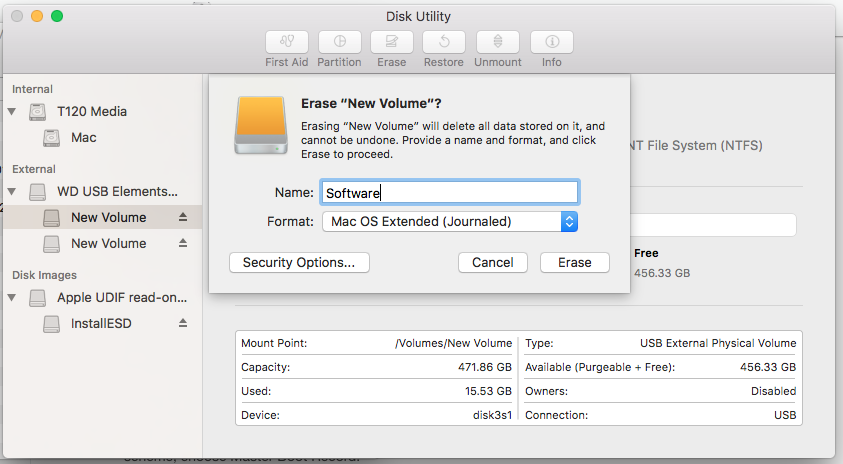

Whether you want to format a hard drive, solid state drive (SSD), USB Flash drive, microSD card or any other type of disk. On the other hand, if you plan on using the disk between your Mac and Windows PC, you can format it to a filesystem compatible to both.
FORMAT AN SSD FOR MAC OS X MAC OS X
However, you should know a drive formatted to be entirely compatible with the Mac filesystem is more recommended and necessary for use with Time Machine and making bootable Mac OS X disks. That is because Mac can easily read other filesystem formats including those of Windows like MSDOS, FAT, FAT32, exFAT, and NTFS formats.

Though should you plug one into a Mac, it will generally read and work. Most generic computer drives come preformatted for use on Windows PCs and are not compatible with Mac OS X out of the box. But before we get down to that, here is some interesting fact you ought to know.
FORMAT AN SSD FOR MAC OS X HOW TO
If you are experiencing such ‘confusion,’ we are going to walk you through how to format a hard drive for a Mac OS X computer. Coming from Windows to macOS can be somewhat confusing, even on the little things like formatting a hard drive, USB flash drive, or SSD. WARNING: Formatting the drive will erase all data on the drive, so you should copy any data you want off the drive prior to formatting.Admittedly, the Mac OS X platform is fundamentally different from the Windows platform. If APFS is not available then the drive is in MBR and not GUID Partition Map. NOTE: Make sure that Scheme is set to GUID Partition Map and not Master Boot Record (MBR). Check step 2 to confirm Disk Utility is Showing All Devices NOTE: If you don’t see Scheme, then make sure that all devices are showing and the non-indented entry is selected. Once finished, the Disk Utility window displays the SSD unit under its. Select the non-indented entry, you will see Media in the nameĬlick the button labelled Erase in the menu which will bring up this window. Click the Erase button, followed by Erase again on the ensuing confirmation dialog.Click View in the upper left and select Show All Devices.To open Disk Utility - Open Finder > Applications > Utilities > Disk Utility IMPORTANT: Reformatting the drive will erase all data on the drive, so you should copy any data you want off the drive prior to formatting. If you need to go between macOS and Windows then format your drive ExFAT APFS does not natively work with Windows.Traditional hard drives can be formatted APFS, but Apple states that APFS is optimised for SSDs.Time Machine requires the drive to be formatted Mac OS Extended (Journaled) APFS is not currently compatible with Time Machine.APFS is only available when Scheme is set to ‘GUID Partition Map’, APFS will not be shown when Scheme is set to Master Boot Record – See Step 7.APFS drives will not mount on macOS versions older than macOS 10.13 (High Sierra).APFS is not supported for macOS versions prior to 10.13 (High Sierra).It is important to keep the following in mind when formatting to APFS: The following is based on the latest version of macOS. The Apple File System (APFS) formatting option in Disk Utility is only available in macOS 10.13 (High Sierra) and higher. IMPORTANT: This article applies to the following macOS versions:


 0 kommentar(er)
0 kommentar(er)
